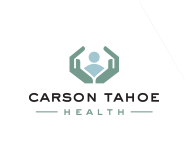Learn the warning signs, symptoms and treatment of heart attacks from Carson Tahoe Health Interventional Cardiologist, Dr. Stephen Tann.
What is a heart attack?
A heart attack occurs if the flow of oxygen-rich blood to a section of heart muscle suddenly becomes blocked. If blood flow isn’t restored quickly, the section of heart muscle begins to die.
Heart attacks are a leading killer of both men and women in the United States. The good news is that excellent treatments are available for heart attacks. Timely treatment can save lives.
What are the signs/symptoms of a heart attack?
There are many symptoms of a heart attack – some even go unnoticed. The most common include the following:
• Chest pain or discomfort – This involves uncomfortable pressure, squeezing, fullness, or pain in the center or left side of the chest that can be mild or strong. This discomfort or pain often lasts more than a few minutes or goes away and comes back.
• Upper body discomfort – This can occur in one or both arms, the back, neck, jaw, or upper part of the stomach.
• Shortness of breath
• Nausea or vomiting
• Light-headedness or sudden dizziness
• Sleep problems
• Fatigue
• Lack of energy
There is some disparity between the symptoms of men and women.
If you think you or someone else may be having a heart attack, call 911 right away. Time is muscle and quick treatment can save your heart and your life.
Who is at risk for a heart attack?
The major controllable risk factors for a heart attack include:
• Smoking
• Hypertension
• High cholesterol
• Obesity
• Diet
• Lack of physical activity
• Diabetes
Unfortunately, risk factors you can’t control still exist, such as a family history of early heart disease and age. In fact, the risk of heart disease increases for men after the age of 45 and for women after the age of 55.
How are heart attacks treated?
Nowadays, the standard of care for treatment of a heart attack is called Primary PCI (Percutaneous Coronary Intervention). This means getting the patient as quickly as possible to a facility with a cardiac catheterization laboratory, and doing a cardiac catheterization procedure with the intent of opening the blocked artery that is causing the heart attack using angioplasty and stent placement.
Various medications are important to administer around the time of the emergent procedure, but the primary goal of therapy is to open the blocked heart artery as quickly as possible. If a patient is nowhere near a facility that can perform PCI, clot-dissolving medications can be given in the attempt to open the blocked artery, but in this day and age, this is a very rare circumstance. The more we study heart attacks, the clearer it becomes that opening the blocked artery yields the best short and long term outcomes, and the lowest rates of complications, such as bleeding.
If you are experiencing symptoms of a heart attack, act fast! Quick treatment could save your life.
1. Call 911 or other emergency services right away. Describe your symptoms, and don’t be afraid to say that you may be having a heart attack.
2. Stay on the phone. The emergency operator will tell you what to do.
3. After calling for help, chew 2 adult-strength aspirin or 3 to 4 low-dose aspirin. Aspirin helps keep blood from clotting, so it may help you survive a heart attack.
If you can’t reach emergency services, or an ambulance is not readily available, have someone drive you to the emergency room as soon as possible. Do not drive yourself.
Remember, if you find yourself in an ambulance or emergency room; don’t be afraid to say, “I think I’m having a heart attack.” If the thought crosses your mind that you may be having a heart attack, you need to speak up. Getting treatment quickly can save your life. Even if you’re not sure it is a heart attack, you still should have it checked out.
For more information on heart health and cardiac care options, go to https://blogcarsontaho.wpengine.com/heart.







